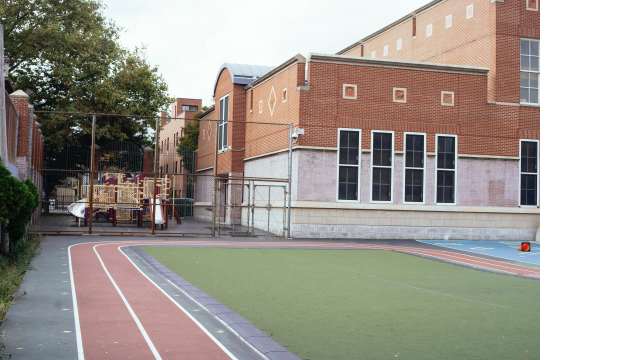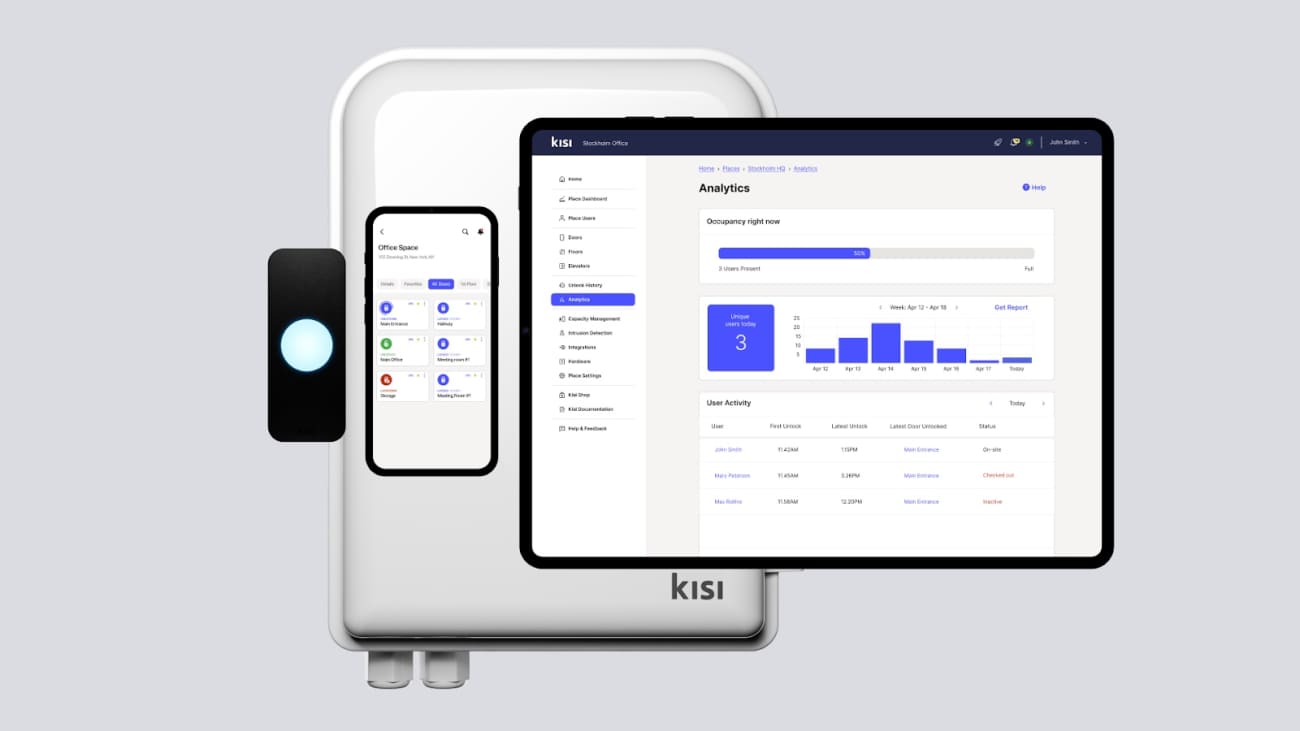Safety and security are fundamental needs according to Maslow's Hierarchy of Needs. People should feel safe wherever they are and whatever they do, and school is no exception. Students and teachers must feel safe before focusing on their growth needs, like teaching and learning.
Let's take a step back before we dive deeper into the subject. What are safety and security? Safety and security are not the same concept, although they are strongly connected.
Safety typically means feeling protected from harm or other undesirable outcomes. The term security is related to the presence of peace, safety, and the protection of people and their resources. It generally refers to the freedom from or resilience against potential harm or other unwanted change caused by others.
What do safety and security mean related to the education system? What are school safety and security? Simply put, safe schools are the schools where the students, employees, and visitors are free to interact in a supportive way to support teaching and learning without feeling afraid or threatened. A secure school covers all measures taken to fight learners, school staff, and property threats in education settings.
It goes without saying that all schools looking to stimulate academic performance should work on creating a safe and secure school environment first. And implementing a cloud-based access control system like Kisi is a crucial first step.
The harsh truth is both private and public schools are still battling paramount safety and security issues. Yet, it's up to the school management to protect the people they're responsible for.

The state of school safety and security #
To understand and support school safety and security, first, we need to comprehend its state and development for the past few years. These subjects cover a variety of campus crime related topics that can be measured and analyzed.
The National Center for Education Statistics (NCES) and the Bureau of Justice Statistics (BJS) collaborate on the "Report on Indicators of School Crime and Safety," – a comprehensive annual publication. Let's take a look at some of their findings, keeping in mind that students might have spent less time at school in 2020 and 2021 due to the pandemic.
Even though nonfatal criminal victimization decreased, there still were almost a million violent and half a million nonviolent incidents in U.S. public schools during the 2019–20 school year.
Unfortunately, in 2020–21 we also experienced the highest number of school shooting casualties in the last 20 years. And this is just scratching the surface.
Almost 3% of grade 9–12 students reported carrying a weapon on school property at least once in the past month, and 7.4% reported being threatened or injured with a weapon on school property during the last year. It’s hardly surprising that almost twice the students reported being more afraid of attack or harm at school than away from school.
It’s more important than ever for schools to consider access control solutions like Kisi to keep the children feel safer and away from harm. Kisi can help prevent external intruders that shouldn’t have access to the school grounds in the first place. Thanks to its many camera integrations, it can assist personnel in anticipating incidents and empower quicker response with alerts and alarms.
Interested in more data? Click here for a more thorough stats overview.
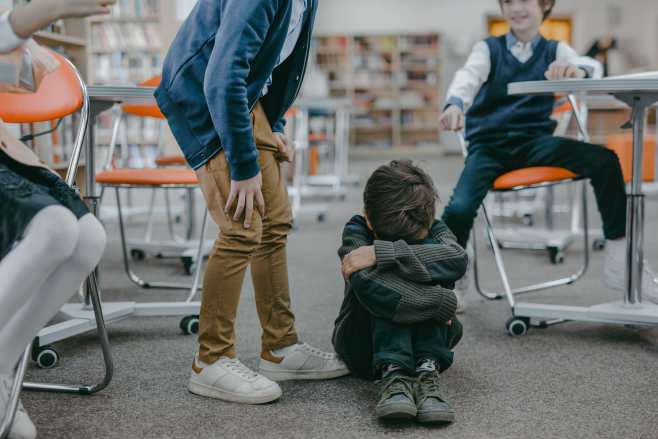
These indicators and stats help inform policymakers and stakeholders of the nature, extent, and scope of the school safety and security issues that should be addressed. They often contribute to developing programs aimed at violence and school crime prevention.
Schools across the United States are also implementing preventive and responsive measures to minimize these issues that their students and teachers can potentially experience.
- In 2019–20, public schools reported the use of the following safety and security measures: 97% control access to school buildings, 91% use security cameras, and 77% require faculty and staff to wear badges or picture IDs. A comprehensive access control solution like Kisi synergizes these 3 essential safety areas.
- While 97% of public schools controlled access to school buildings, 59% controlled access to their school grounds, and 73% had classrooms that could be locked from the inside. Locking all your classrooms remotely is possible when choosing Kisi.
- Only 40% of public schools had installed panic buttons or silent alarms, while 70% had an electronic notification system, and 66% had a structured anonymous threat reporting system. Kisi’s intrusion detection and alarm integrations can alert stakeholders of potential incidents.
- In 2019–20, about 52% of public schools reported having a written plan for procedures to be performed in the event of a pandemic. Ensuring optimal school occupancy is easier with Kisi’s capacity management.
- ≈51% of traditional public schools had a School Resource Officer, while only 25% of the charter schools had one. Access control systems like Kisi can make their job more efficient and be a solid replacement for the schools that haven’t hired SRO.
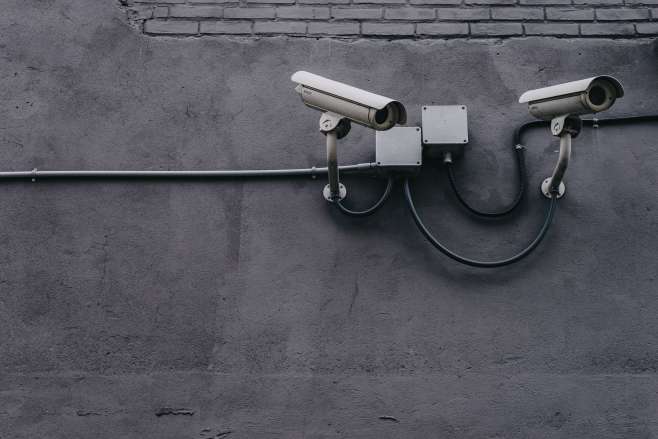
School physical security strategies and elements #
Tackling complex phenomena like school crime and violence requires education institutions to approach school safety and security methodically. Applying a systems-based approach to physical security can help create safer school environments that facilitate teaching and learning without asking already strained staff members to become security experts.
Given that each school is different, there can’t be a completely uniform approach to physical security. Still, choosing a systems-based approach to physical security can help schools address their unique circumstances while ensuring protection and mitigation measures complement measures to prevent violence and respond to and recover from violent incidents. Taking a layered approach to physical security assures that the system works in an integrated way to detect, delay, and respond to threats. It also helps to prevent single points of failure.
A layered, systems-based approach to physical security ensures that all physical security elements work cohesively to provide security benefits. Before we dive deeper into the physical security elements, let’s explore the three physical security strategies.
School physical security strategies #
Detection
The ability of the physical security measure to communicate that an incident related to safety is currently occurring or about to occur. Installing monitored closed-circuit TV (CCTV) in the school, security guard patrols at the premises, and open-plan designs that allow natural surveillance can enhance the detection strategy.
Delay
All physical security measures that delay the safety-related incident in a way, often by increasing the level of effort, resources, and time needed for an incident to occur. Examples of this type of measure are access control solutions at the school entrances, fencing, reinforcing the school’s windows or doors, regular staff patrols, etc.
Response
The response strategy encompasses the physical security measures that limit the potential damage caused by the threat or contribute to overcoming the threat. Access control solutions that communicate and notify of the possible school threat, first aid kits, or hiring security guards are examples of adequate response.
School physical security elements #
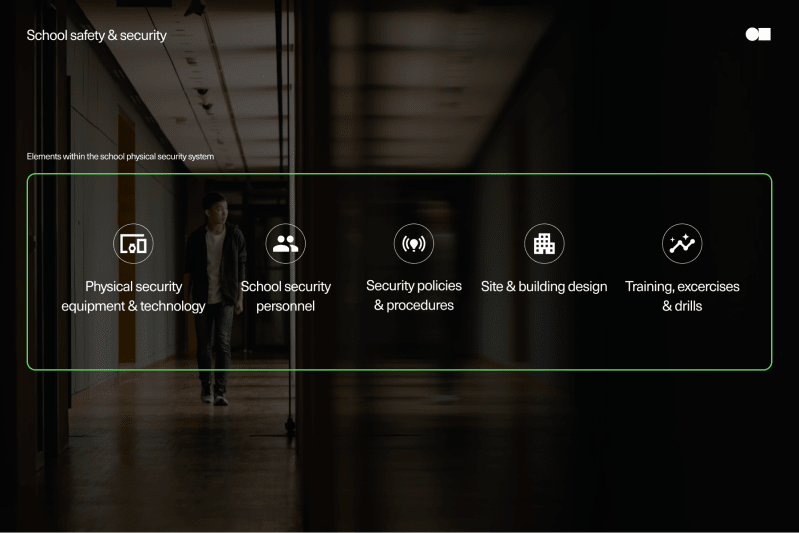
Physical security equipment and technology
Given the school safety and security state and the repercussions when physical security is poorly implemented, modern technology companies, like Kisi, offer a multitude of increasingly sophisticated security equipment. Security measures range from the least costly and modern, like door bolts, to more advanced – access control systems integrated with surveillance cameras and alarm systems.
The ability of the newly purchased security equipment to integrate with the existing technology is a valuable cost-saving strategy and essential for avoiding single points of failure. Let’s take installing Kisi’s access control solution in a school context, for instance. Our tech integrations support linking multiple technologies together. So, attempted unauthorized access can be seen on the video camera surveillance and trigger an alarm. The Kisi access control system can also send a notification of the identified suspicious activity to relevant decision-makers on their mobile, so they can promptly coordinate further action.
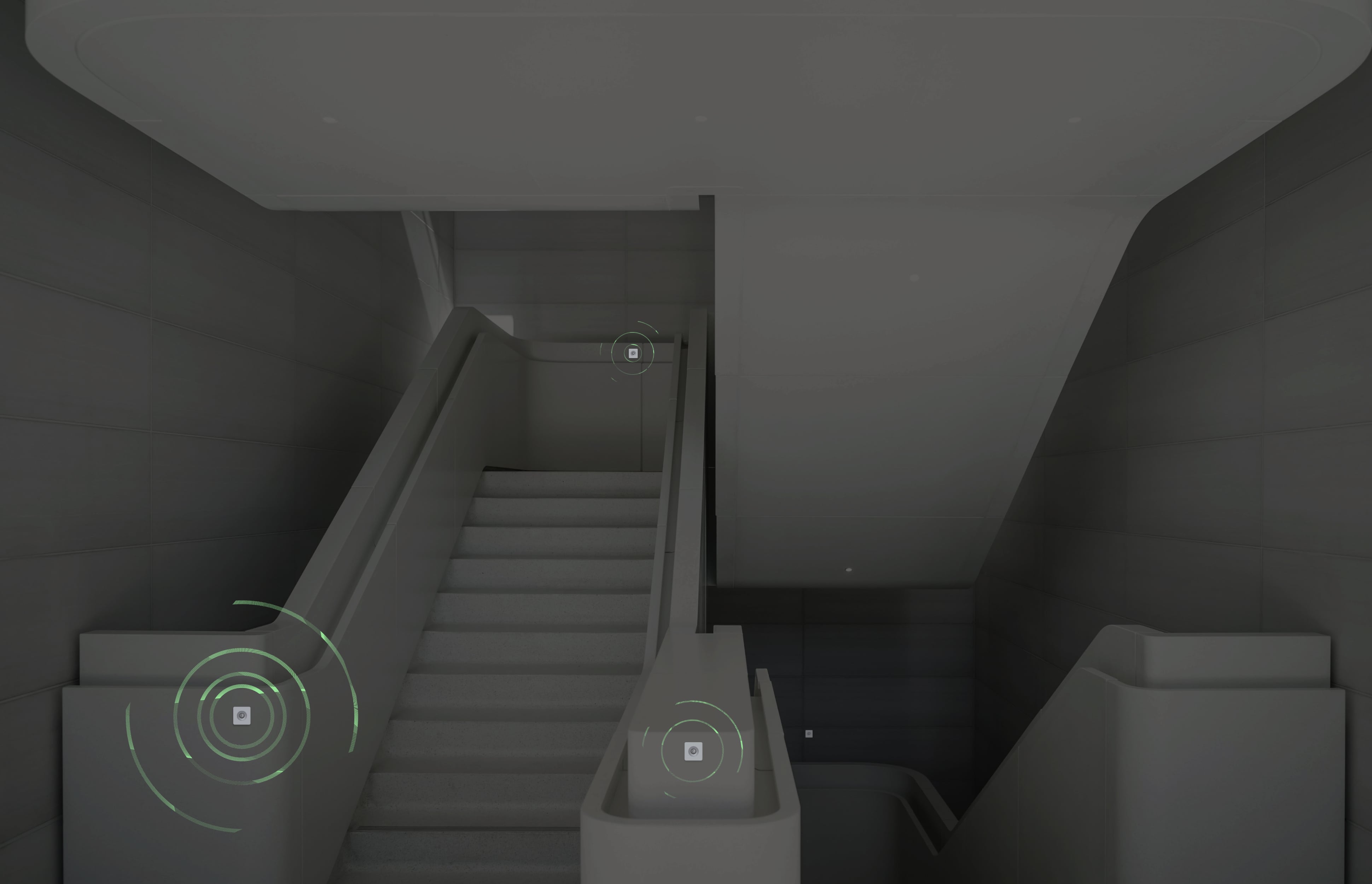
School site and building design features
Unlike some types of facilities, such as military or correctional facilities, schools need to present a welcoming environment while securing their spaces. Striving to maintain an open yet secure climate is quite challenging.
When planning school construction, there are choices around the overall layout of the school, like whether school functions will be clustered or dispersed. Dispersing school functions by installing portable instructional buildings, for example, can mitigate single-point vulnerabilities but increase the complexity of emergency response mechanisms and diminish the effectiveness of specific technologies, like video surveillance.
The orientation of the new school building, the incorporation of open space into school site design, and the number and location of points of entry are some of the site or building design issues that need attention.
Crime Prevention Through Environmental Design (CPTED) is school safety and security design approach. Its multidisciplinary nature deters crime through the built-in, social, and administrative environments. It offers various options that address site, building, and interior space design, installation of accompanying systems and equipment, and the broader community context. When properly integrated, CPTED approaches can offer a school multiple security and safety benefits without making the school look like a fortress.
Unfortunately, measures that fall under the site and building element scope will likely be a significant financial burden for schools, whether it comes to incorporating new site and building design features into an altogether new school or campus or fitting them into existing structures.
School security personnel
The human component of physical security is inevitable, and decisions in this area can be pretty sensitive and costly. People operate the school security equipment and technologies while being responsible for designing policies and procedures to use that equipment in favor of increased school safety.
Even though most schools maintain only small numbers of personnel assigned exclusively to security work, there are many options for hiring security personnel or assigning security-specific roles and responsibilities to school staff. Schools can decide to rely solely on local law enforcement, hire off-duty police officers or private security personnel, and assign school staff or volunteers to monitor hallways and common areas.
Often, schools hire school resource officers while coordinating with local police departments. School resource officers (SRO) are sworn police officers assigned to a school district or individual school as part of their efforts to improve physical security.
SROs not only enforce the law within school boundaries but also provide expertise on safety. They educate students about broad safety and security issues and can also serve as informal counselors and mentors to them.

Security policies and procedures
School’s policies and procedures for safety and security, along with security training and exercises, are the glue to the physical security system. Without them, the effectiveness of the tech and equipment, the hired security personnel, and the school safety-related design features could decline significantly. For instance, students, teachers, and staff need to know what to do if an emergency is bound to happen or how to report a criminal or violent act if they witness one.
Unfortunately, there can’t be a uniform policy to protect against and mitigate a specific type of threat or set of threats. Some states or localities mandate certain safety- and security-related policies to be implemented by the schools. Beyond these mandates, each school must determine the additional policies, rules, and procedures that best fit their individual needs considering its distinct school community.
Even though every school is unique, each one should implement the necessary policies and rules to ensure that any installed technology works as planned. Schools should also consider how the protection and mitigation policies and procedures interact with the rest of the school safety system’s elements. Another important thing is how all of this could potentially affect the students’ and staff’s privacy and other rights.
The integrated school policies and procedures should not end when students leave school. The practices and procedures addressing building access, emergency evacuation, and security personnel, for instance, should also account for after-school hours. They should also be relevant to athletic events, school board meetings, student performances, and other events that occur in the later hours or when school is off, like on weekends or in the summer.
Unlike the elements we already discussed, well-planned and consistent physical security school policies, rules, and procedures aren’t that big of an investment.
Training, exercises, and drills
Regular training increases the effectiveness of the other school security elements, like how to use the technology or apply the policies. Training is valuable in increasing knowledge and awareness since everyone should know their respective roles and responsibilities.
Each school's safety and security training program should match the particular technologies it has installed to protect its spaces. The installed tech won't do much good if the parties don't know how to properly use, maintain, and update the school's physical security equipment.
Even though school safety and security training can be delivered in various ways, the entire school community should be involved. Teachers, administrators, students, security personnel, and external stakeholders, like the local police and fire first responders, all play their part.
Some schools choose a series of short online courses that prepare teachers and staff for emergencies, while others schedule practical drills and exercises periodically throughout the school year. Some states even mandate that schools implement these types of drills regularly. They state that giving students and staff regular opportunities to practice their responsibilities in emergencies is vital to ensure the overall system's functionality.
Still, the training won't be that effective if it is perceived as another wearisome task placed on the school community. It should be based on strategies that are easy to learn, remember, and use. When schools create too complex training regimens or don't prioritize needs, running security exercises and drills can become costly and time-consuming.
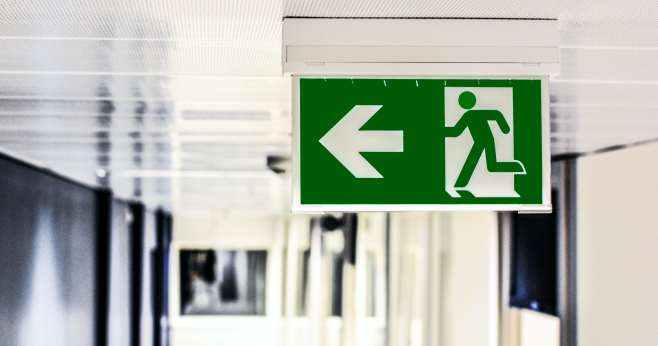
Evaluating school security #
Considering the previously discussed physical security strategies and elements, it's time to evaluate your school's security. Here are the 4 crucial things you need to assess:
- Identify your school's key security issues, define expectations, and together with the stakeholders, reach a consensus on classroom security, lockdown strategies, and door access control functions.
- Estimate current perimeter and classroom security needs regarding key control or other keyless credentials, building access and time schedules, potential visitors and critical entry points, and lockdown requirements. You should also discuss the estimated timeline to complete security upgrades and agree on the security versus convenience issue.
- Now, you should be ready to recommend upgrades when it comes to perimeter security and the following openings: exterior, entrance, access, interior, and classroom.
- The last part is about expense planning, like reviewing the security upgrade budget and discovering if grant funding is available.
What is school access control? #

Cloud-based access control systems, like Kisi, are the go-to solution for enhancing school safety and security. The system consists of software and 3 hardware parts:
The entry barrier #
Physically restricts entry to the people that shouldn't access the school. The usual setup consists of a door secured by a magnetic or electric lock and a door reader that interacts with the users.
The credentials #
They are the device the users use to identify themselves as someone who is granted access. Cards, fobs, and keypads are the most common ones. Given that many students can easily lose, forget, or misplace them, Kisi also allows users to enter schools using their mobile phones.
The controller #
The brain of the access control system. It connects all the parts and ensures that the access control software and hardware communicate seamlessly to provide an exquisite user experience.
The software #
Administrators use this to decide who, where, and when can gain access. Advanced systems like Kisi provide numerous options and benefits, like remote management, intrusion alerts, lockdown, and even customizing group access. The user-friendly software is essential for both admins and end-users to have a positive experience.
How can access control help strengthen school safety and security? #
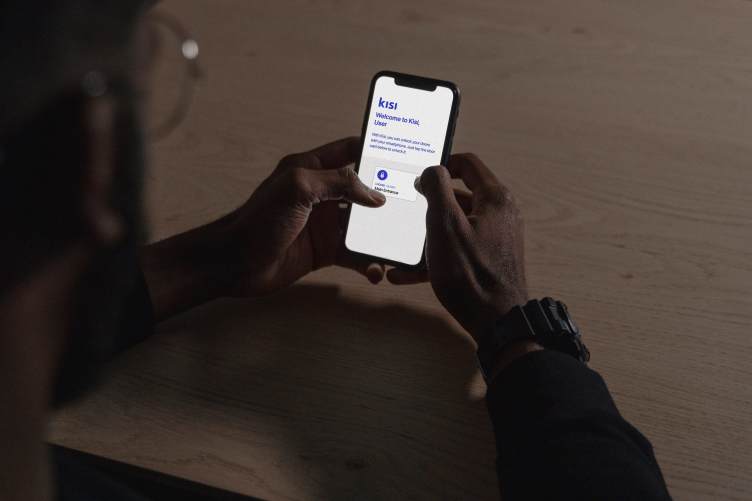
Manage all locations and entry points from a single dashboard #
Managing a school with dozens of classrooms, offices, storage rooms, laboratories, and other spaces that require limited access is practical and secure only with cloud-based access control.
A modern access control system will also integrate with your surveillance system and provide options like lockdown, capacity management, alarms, and reporting on the entry events. Admins get to do all this from one screen and don't even have to be on site.
Improve entry point management #
Modern access control solutions allow admins to manage access more effectively while improving entry point security. This way, schools can do the once impossible - monitor and manage all the entries without having dedicated security personnel at every door. The access system can even communicate security issues, like breaches, empowering a quick response.
Admins can customize access permission, so people will only have access to the needed places. The specific pupil groups, maintenance staff, or teachers don’t have the same access needs. For instance, only the teachers need access to the teacher’s lounge.
Lock spaces with a click #
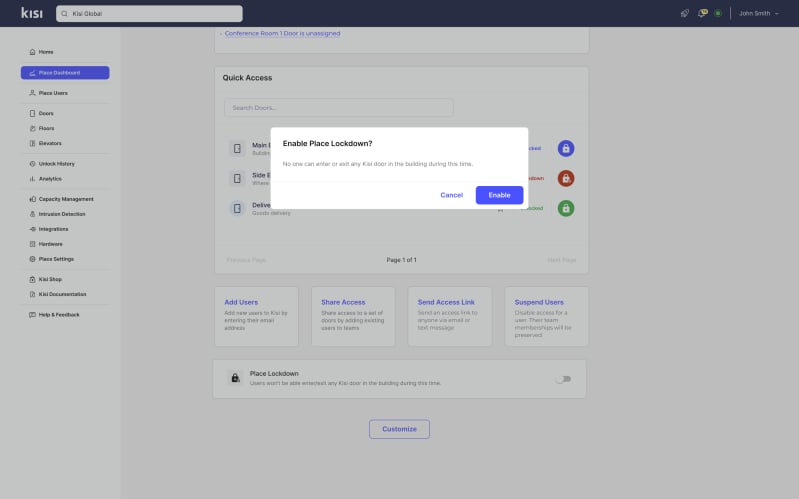
Schools often encourage faculty and students to shelter in place (remain in their classrooms or offices) in the case of an incident. By implementing modern access control, staff members don’t have to rush to lock the doors but can focus on keeping an eye on their students. Even the unoccupied rooms can get locked remotely, easing any potential search efforts.
With systems like Kisi, you can put your entire facility on lockdown or lock individual doors with a simple click. You can rest assured that the classrooms, offices, or other rooms where your people are sheltering will be locked.
Integrate with other systems #
Moving your access control system to the cloud means you get to synchronize it with the rest of your systems. Integrating your security cameras allows you to monitor and analyze the crucial entry points to better respond to potential threats. The result – improved response times and prevented attacks, especially when combined with the alerts your system will send.
Integrating with other directories your school uses makes your staff more efficient as well. You also get comprehensive data to analyze and add to the hours of manual labor you get to save.
Secure future #
The school access control should be flexible and scalable to ensure longevity. Cloud-based access control, like Kisi, scales with you. Adding more physical locations, like campuses, classrooms, or offices, and keeping up with the ever-changing staff and students is a breeze.
As a product manufactured in the USA and engineered in Sweden, Kisi balances security, stability, and tech advancements. The dedicated product team works on constant product updates, delivered to our client as over-the-air updates. This way, you won't experience any compliance issues. And in case you need access control support, you won't have to budget for expensive contractors. The support team is here to address any concerns and issues.
Students, staff, and school access control #
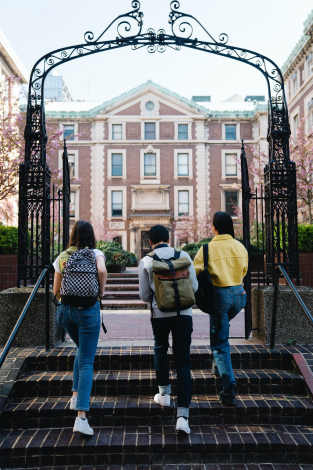
Technology makes our lives not only safer but more convenient as well. Keyless and mobile access control solutions can make life easier for students and staff. Given we don’t leave the house without our mobile phones, it can provide the most convenient and secure access and an extra layer of control for the school stakeholders.
Access control systems like Kisi empower school admins to control who, when, and where gains access and manage it remotely from a single pane of glass. The school is more flexible, people feel safer, and costs drop, thanks to streamlined school access management.
Your school can easily differentiate and grant specific entry privileges to students, teachers, support staff, and visitors. For instance, the basketball team can have access to the gym during their training sessions even after regular school hours without the need for additional staff.
Your next one-off events won’t be a security concern and will be a breeze to organize. Instead of hiring extra staff, sharing keys, or issuing extra cards or fobs, you can send visitors a link that will grant access to them during specific hours and only at the event’s location.
School safety and security funding and grants #
The schools' need to further improve their safety and security with access control systems like Kisi is evident. Some schools, unfortunately, might struggle with their budget.
Many states, recognizing the importance of school security, are allocating millions of dollars so schools can equip themselves better with security cameras or access control systems. Lately, even federal Covid-19 relief funds are redistributed for security, emphasizing its significance.
The funds' availability and grant programs tend to change yearly. So schools need to be diligent if searching for private, federal, state, or local funds. Using the Grants Finder Tool and following some best practices can take you closer to securing a security grant. You can also ask your state's law enforcement agencies and Department of Education for directions.
Some agencies offer a way to register so you can get notified of grant programs via email. Your Chamber of Commerce might also have information about potential grant programs, foundations, or other funding opportunities. All these places will help you identify suitable programs. What's left is for you to write and submit grant proposals.
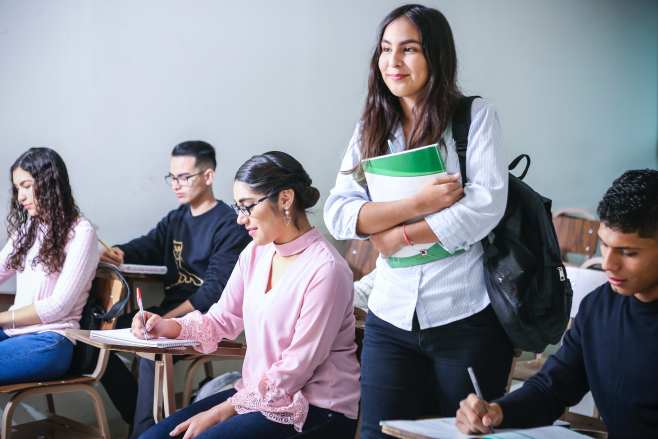
Open the door to a safer and more secure school #
There's nothing more important than the safety and security of school students and staff. Even the most talented and motivated people can't reach their potential when this basic need isn't met.
Modern access control can positively reinforce all school physical security elements and strategies while improving the user experience. It can bring back the feeling of a free and stimulating environment that doesn't feel like a fortress.
If you already have a legacy access control system, you don’t have to invest in all new tech. With Kisi's Controller Pro 2, you get to move to the cloud and enjoy all its benefits without having to replace all your legacy hardware. Contact our team for more details and open the door to a more secure school and happier, motivated students and staff.

Vera Eftimovska
Marketing Campaign Manager at Kisi, blends her psychology background with hands-on experience in access control and workplace security. Passionate about how technology and human behavior intersect, she shares insights that help businesses build resilient, future-ready, and security-driven workplaces.
